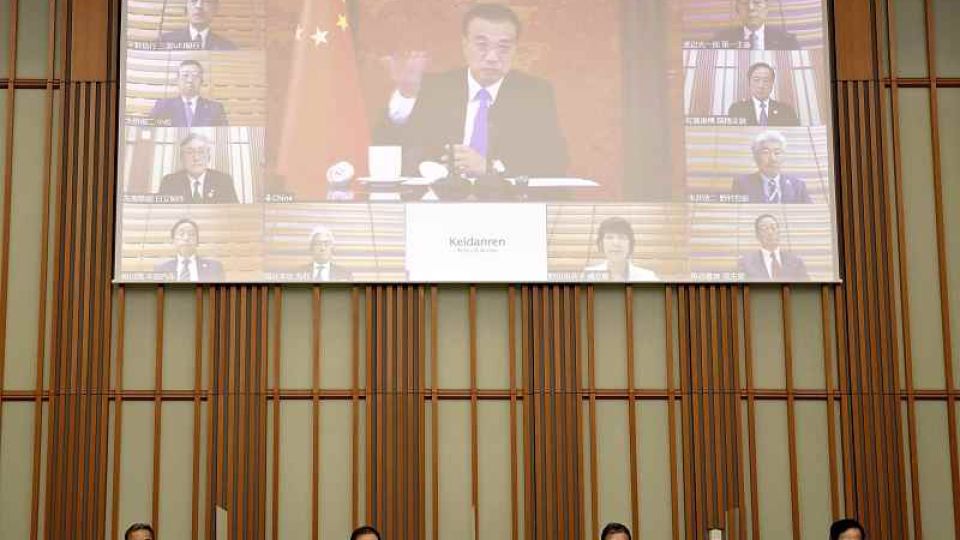October 3, 2022
TOKYO – On Sept. 29, Japan and China marked the 50th anniversary of the normalization of their diplomatic relations in 1972. Going forward, how should Japan deal with a China that has risen as an economic and military power and has been behaving in an increasingly coercive manner?
***
The multifunction machine looked just like any other found in an office except that this device, which can photocopy and fax among its other functions, was painted like a piece of military equipment in distinctive olive drab adorned with a red star.
Like many such items found in the offices of some military organizations in China, one might think it was made by a Chinese company, but a Japanese enterprise was apparently involved in its design and manufacture.
A source who revealed the existence of these devices to The Yomiuri Shimbun said Japanese companies have such a high reputation for their technological standards in the business machine sector that China even adopted these products for use in military offices, where military secrets are sent and received and high-level information security is required.
This spring, the Chinese government started considering a system that would prompt domestic production of the entire manufacturing process for these devices, including the research, development and design stages and even their components and assembly. If companies from Japan and other nations fail to comply, they will not meet China’s national standards and become unable to provide items for government procurement.
The question facing Japanese enterprises is whether to transfer their technologies or withdraw from the market in China. Beijing has been pushing this test of allegiance.
The Japan-China relationship has been “politically cool, but economically hot” for years. Even when political tensions rattle bilateral ties, the economies remain closely linked.
With China now locked in a struggle for technological supremacy with the United States, Beijing is hungrily absorbing the technologies of foreign countries as it seeks to become a more powerful nation. The Chinese government’s actions have rammed that reality home to Japanese economic circles.
In the autumn of 2002, the Japan Business Machine and Information System Industries Association dispatched a delegation of senior company executives on a visit to China. During an exchange of views, a senior official of China’s then Information Industry Ministry (replaced in 2008 by the Industry and Information Technology Ministry) declared, “Government procurement will give priority to products that have been manufactured in China.”
The delegation’s report from the trip mentioned the concerns of one participant who felt that China “was trying to move Japan’s entire multifunction office machine industry to China as a national policy.”
Despite this, the business machine industry took no action because the rapid growth of China’s huge market was a certainty. But as a result of China continuing to manufacture 70-80% of its multifunction office devices domestically, the Japanese industry is now facing a bill that has been running up for more than 20 years.
Since Tokyo and Beijing normalized diplomatic relations in 1972, Japan has generously shared its advanced technologies, starting with automobiles and steel, through joint ventures in China and other channels. China has exported technologies it gained through these partnerships as its own and boosted its influence in other nations.
In October 2021, the Chinese government announced the China Standards 2035 strategy that aims to make China even more economically powerful. One main objective of this strategy has been to align at least 85% of China’s national standards set for products and technologies with those of the International Organization for Standardization (ISO). Having China’s own technologies adopted by the ISO could be advantageous in the global market for the respective sectors.
Japan’s government passed legislation that promotes economic security this May. It has promoted ISO standards and sought to reduce the nation’s dependence on supply chains involving China.
In September, Daikin Industries, Ltd., a major air conditioner manufacturer that earns about one-sixth of its sales in China, began to review its reliance on China in its supply chains. Daikin is looking to develop motors that do not use rare earths, many of which come from China. These motors will start being fitted into air conditioners from the year beginning April 2023, and Daikin plans to eventually have them in half of all units it makes.
The motivation for these changes has been the lingering difficulty in predicting what might happen in China, as was shown by lockdowns imposed in cities such as Shanghai due to COVID-19 outbreaks.
Even so, Chinese Premier Li Keqiang held an online dialogue with Keidanren (Japan Business Federation) executives and other business leaders on Sept. 22, the first such high-level meeting in three years. Both sides confirmed they would continue their cooperation.
“Our economies are strongly tied together and inextricably linked to the world,” Keidanren Chairman Masakazu Tokura said.
Li replied that the mutual benefits of the relationship had huge momentum that was unchangeable.
How will Japan manage and confront the risks that come with this powerful neighbor? Japan’s choices and its readiness for the next 50 years will be put to the test.

